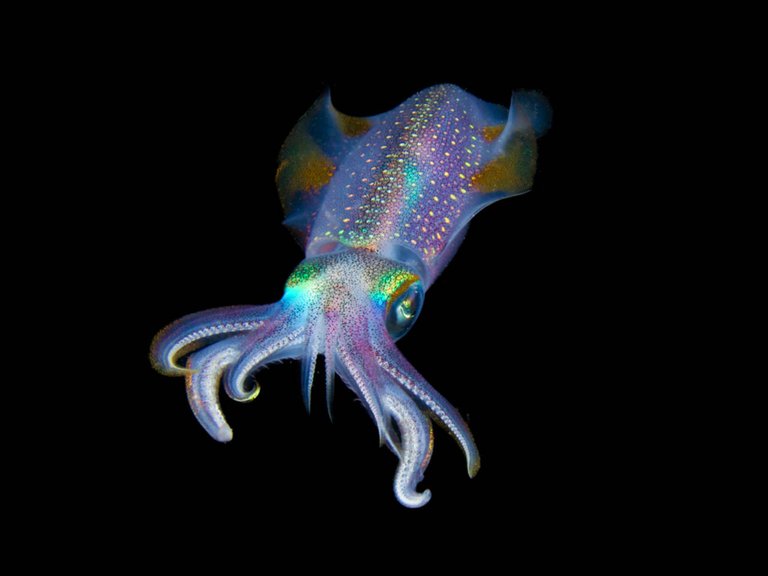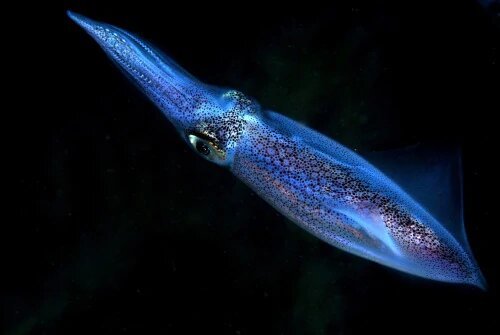
Source: National Geographic. Sakis Lazaride
One of the most striking species for its organic condition of bioluminescence is the firefly squid, its scientific name Watasenia scintillans, this is a cephalopod that is part of the Enoploteuthidae family. This fascinating creature is a small mollusk that inhabits the seas of Japan with only seven centimeters in length, it attracts the attention of researchers and curious people because of its shiny body. It lives in the depths of the Japanese ocean almost all year round, except in the spring when it is seen at the surface for reproduction.
Of its characteristics, the property of bioluminescence, which is a product of the luminous pigments in the skin and the presence of three visual pigments in the retina of this squid, stand out with special attention. The glow occurs in the mollusk when the chemical reaction that originates from the enzyme called luciferase which is activated inside the cells called photocytes producing the luminous effect along 800 organs located in its vertebral mantle, five under the eye area and three at the tip of its tentacles which make its entire body a spectacle of light.

Sourge: National Geographic
According to the different theories of biologists, its beautiful and bright blue light may be a communication mechanism with other squids, a defense against predators or it may serve to attract the attention of its prey. Although none of the hypotheses and theories about the brightness of this squid have been confirmed, it is known that all its life habits are related to its bioluminescence. As for its life span, a maximum of one year has been established. Its diet varies according to each stage of its life, in the pre larval stage its diet is exclusively based on zooplankton, as it develops it begins to consume small crustaceans, fish and mollusks. This is a highly predatory species because it is considered the food source of other creatures.

Source: National Geographic
The habitat of the firefly squid is found in the coasts of Japan at a depth of three to four hundred meters during the day, at night they can be found between twenty and forty meters deep, which is the time when predators and fishermen take advantage to catch them. They are recognized as a special dish in Japanese cuisine and are highly sought after by people who enjoy seafood. However, we must remember that we must respect each of the species that inhabit the planet, because due to uncontrolled fishing, habitat destruction and pollution, the population of these and other species is decreasing.
References
Digital Encyclopedia of Animals (2020) https://enciclopediadeanimales.com/calamar-luciernaga/
I think it is impressive to be able to learn more and more about the species that inhabit the seas and oceans, especially these particular ones.